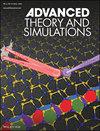Role of the Setae in an Ectoparasitic Seal Louse in Reducing Surface Drag: Numerical Modeling Approach
IF 2.9
4区 工程技术
Q1 MULTIDISCIPLINARY SCIENCES
引用次数: 0
Abstract
Echinophthirius horridus, an ectoparasitic seal louse adapted for living on diving wildlife in the marine environment, exhibits unique cuticular morphology with dense body coverage of characteristically-shaped setae. This study investigates their potential role in reducing drag during the host's diving activities. Scanning electron microscopy (SEM) and confocal laser scanning microscopy (CLSM) examines E. horridus setae morphology, revealing stair-like elevations and gradual sclerotization increase from base to tip. Numerical simulations using movable cellular automata (MCA) demonstrate that optimal inclination of surface protrusions leads to vortex formation, potentially reducing friction and energy losses. Vertical protrusions cause stronger flow perturbations and higher energy dissipation compared to natural inclination. Over time, as flow self-organizes, total power losses decrease, suggesting natural selection optimized surface structure inclination and spacing to minimize friction and energy losses. Comparisons with shark scales reveal morphological similarities but different drag reduction mechanisms, with seal louse setae utilizing a “ball-bearing” effect and shark scales relying on a “riblet effect.” This study provides insights into surface topography's influence on fluid dynamics at small scales, with potential applications in understanding biological surfaces and designing reduced surface drag artificial surfaces.

外寄生海豹虱体毛在减少表面阻力中的作用:数值模拟方法
棘蚤是一种适应海洋环境中以潜水野生动物为食的外寄生海豹虱,具有独特的表皮形态和密集的体覆盖特征形状的刚毛。本研究探讨了它们在主人潜水活动中减少阻力的潜在作用。扫描电子显微镜(SEM)和共聚焦激光扫描显微镜(CLSM)检查了棘毛的形态,显示了从基部到尖端的阶梯状高度和逐渐硬化的增加。利用可移动元胞自动机(MCA)进行的数值模拟表明,表面突起的最佳倾角会导致涡流的形成,从而潜在地减少摩擦和能量损失。与自然倾斜相比,垂直凸起引起更强的流动扰动和更高的能量耗散。随着时间的推移,随着流动的自我组织,总功率损失减少,这表明自然选择优化了表面结构倾角和间距,以最大限度地减少摩擦和能量损失。与鲨鱼鳞片的比较揭示了形态上的相似性,但减少阻力的机制不同,海豹虱的毛利用“球轴承”效应,鲨鱼的鳞片依靠“肋骨效应”。该研究提供了小尺度表面形貌对流体动力学影响的见解,在理解生物表面和设计减少表面阻力的人工表面方面具有潜在的应用前景。
本文章由计算机程序翻译,如有差异,请以英文原文为准。
求助全文
约1分钟内获得全文
求助全文
来源期刊

Advanced Theory and Simulations
Multidisciplinary-Multidisciplinary
CiteScore
5.50
自引率
3.00%
发文量
221
期刊介绍:
Advanced Theory and Simulations is an interdisciplinary, international, English-language journal that publishes high-quality scientific results focusing on the development and application of theoretical methods, modeling and simulation approaches in all natural science and medicine areas, including:
materials, chemistry, condensed matter physics
engineering, energy
life science, biology, medicine
atmospheric/environmental science, climate science
planetary science, astronomy, cosmology
method development, numerical methods, statistics
 求助内容:
求助内容: 应助结果提醒方式:
应助结果提醒方式:


